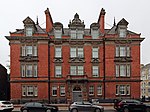Liverpool Institute for Performing Arts

The Liverpool Institute for Performing Arts (LIPA) is a performing arts higher education institution in Liverpool, founded by Paul McCartney and Mark Featherstone-Witty and opened in 1996. LIPA offers 11 full-time BA (Hons) degrees in a range of fields across the performing arts, as well as three Foundation Certificate programmes of study in acting, music technology, and dance and popular music. LIPA offers full-time, one-year master's-level degree courses in acting (company) and costume making. It is a member of the Federation of Drama Schools.The Education Guardian has previously ranked LIPA No. 1 in the UK for several of its degree courses, and it is regularly ranked as one of the top 10 specialist institutions. LIPA has been awarded gold by the Government's Teaching Excellence Framework (TEF), which rates higher education providers by teaching quality.In September 2003, LIPA launched LIPA 4–19, a part-time performing arts academy for 4-to-19-year-olds. Since then, a satellite school and associate academies have also been launched. LIPA started its own primary free school in 2014 and its own sixth form free college in 2016.
Excerpt from the Wikipedia article Liverpool Institute for Performing Arts (License: CC BY-SA 3.0, Authors, Images).Liverpool Institute for Performing Arts
Pilgrim Street, Liverpool Georgian Quarter
Geographical coordinates (GPS) Address Website External links Nearby Places Show on map
Geographical coordinates (GPS)
| Latitude | Longitude |
|---|---|
| N 53.399555555556 ° | E -2.9723055555556 ° |
Address
Liverpool Institute for Performing Arts
Pilgrim Street
L1 9DY Liverpool, Georgian Quarter
England, United Kingdom
Open on Google Maps









